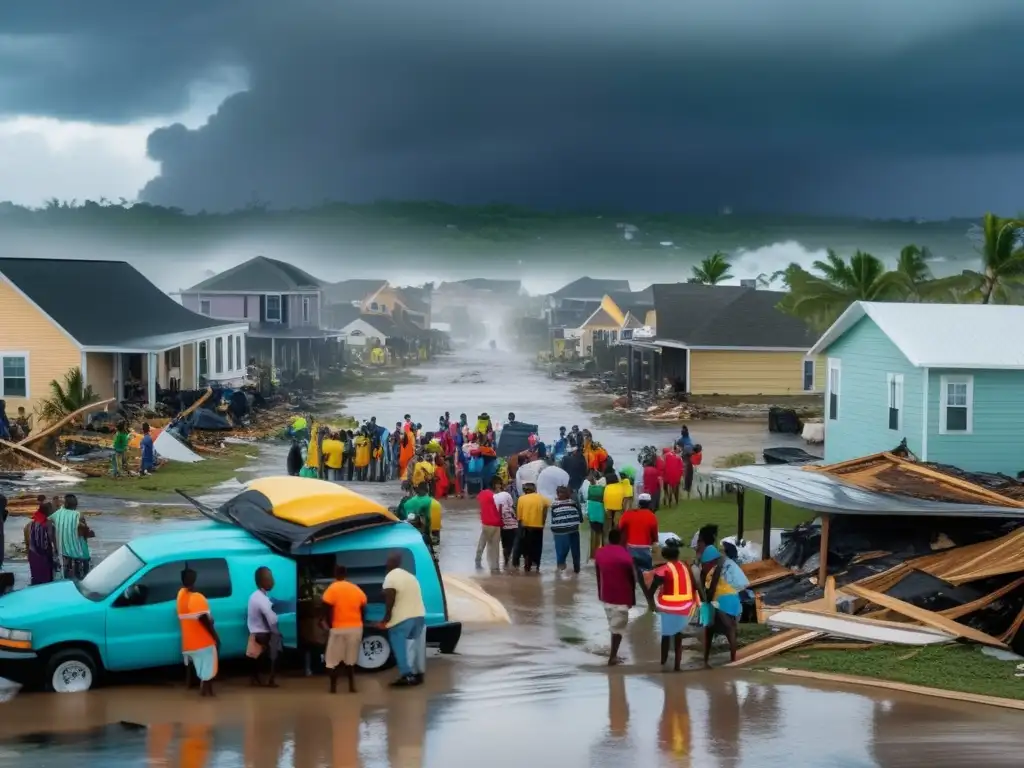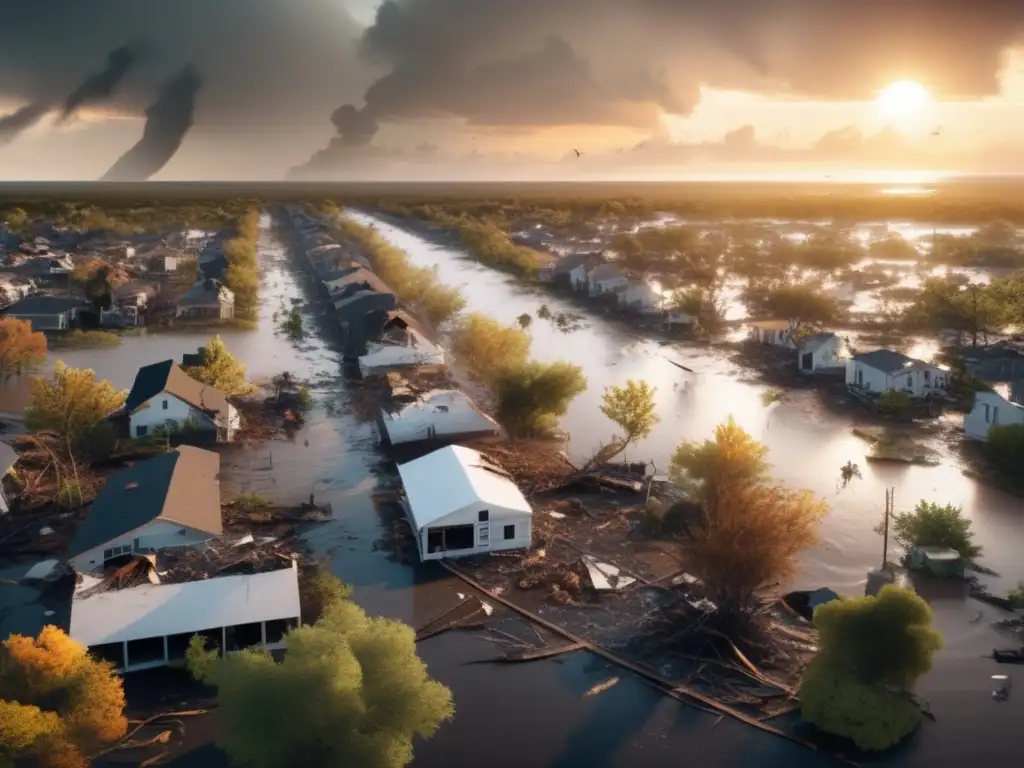Business Continuity: Getting Back To Work Post-Hurricane

Business Continuity: Getting Back to Work Post-Hurricane
Introduction
When hurricanes make landfall, they can leave devastating impacts on businesses in the affected areas. In addition to physical damage, companies may experience power outages, communication disruptions, and supply chain issues. Business continuity planning is critical to help companies respond and recover from these challenges, and to get back to work as quickly as possible post-hurricane.
The Importance of Business Continuity Planning

Assessing Risks
Business continuity planning should start with identifying potential risks that a hurricane could bring to your business. Risks include physical damage to buildings and equipment, loss of power and water supply, communication disruptions, data loss, and supply chain interruptions. By assessing these risks, businesses can develop plans and strategies to mitigate the impacts of a hurricane.
Creating a Plan
A business continuity plan should be comprehensive and cover all aspects of the company's operations. It should include emergency procedures, evacuation plans, communication protocols, backup and recovery plans for data and systems, and procedures for resuming normal operations. Business continuity plans should be tested regularly with simulations of different scenarios, and updated as necessary based on new risks or changes in the business.
Protecting Your Assets
One key aspect of business continuity planning is protecting physical assets such as buildings, equipment, and inventory. Businesses should take steps to secure their facilities by installing storm shutters, reinforcing doors and windows, securing loose objects, and moving valuable equipment to higher floors or inland locations. Companies should also consider purchasing insurance to protect against potential losses from hurricanes and other natural disasters.
Communication and Coordination

Internal Communications
During and after a hurricane, communication is critical to ensure employees are safe and informed. Businesses should have a communication plan in place that includes multiple channels of communication, such as phone, email, text, and social media. Managers should also be trained to communicate effectively with employees during emergencies, and to provide updates on the status of the business. Additionally, companies should have a system in place for tracking employee whereabouts and safety.
External Communications
External communication is also important during a hurricane, particularly with customers, suppliers, and partners. Companies should have a plan for communicating with these stakeholders before, during, and after a hurricane. This plan should include contact information, backup communication methods, and procedures for updating stakeholders on the status of the business and any supply chain disruptions.
Businesses should also work closely with local authorities during and after a hurricane. They should be aware of any evacuation orders or other emergency measures, and should follow guidelines for reentry into affected areas. Companies should also coordinate with local officials to assess damage, establish priorities for repairs and recovery, and obtain any necessary permits or approvals for resuming operations.
Supply Chain Management

Risk Assessment
One of the biggest challenges for businesses post-hurricane is managing their supply chains. Companies should conduct risk assessments of their suppliers and logistics providers to understand potential vulnerabilities. This assessment should include suppliers' locations, transportation routes, and their own contingency plans for responding to disasters. By identifying potential risks, companies can develop strategies to mitigate them, such as identifying backup suppliers or diversifying their supply chains.
Inventory Management
Companies should also consider their inventory levels pre- and post-hurricane. If they anticipate a disruption to their supply chain, they may need to increase their inventory levels to ensure continuity of operations. Conversely, if they expect a temporary slowdown in demand after a hurricane, they may need to reduce their inventory levels to avoid excess stock.
Transportation and Logistics
Transportation and logistics are critical to managing supply chains during and after a hurricane. Companies should have plans in place for rerouting shipments, identifying alternative transportation modes, and managing any delays or disruptions. They should also work closely with their logistics providers to ensure timely delivery of goods.
Employee Support and Assistance

Emergency Preparedness Training
Preparing employees for emergencies is critical to ensuring their safety and minimizing the risk of injury or loss of life. Companies should conduct regular emergency preparedness training to educate employees on how to respond to hurricanes and other disasters. This training should cover topics such as evacuation procedures, first aid and CPR, and sheltering in place.
Emotional Support and Assistance
Hurricanes can be traumatic events that can have long-lasting emotional impacts on employees. Companies should have resources in place to provide emotional support and assistance to employees who may be struggling in the aftermath of a hurricane. This may include access to counseling services, employee assistance programs, or other mental health resources.
Financial Assistance
Finally, companies can provide financial assistance to employees who may be struggling to recover from the impacts of a hurricane. This may include providing loans or grants, offering paid time off to deal with personal or family matters, or providing other forms of financial support.
Frequently Asked Questions

-
What should businesses do to prepare for a hurricane?
Businesses should develop comprehensive business continuity plans that cover all aspects of their operations, including emergency procedures, communication protocols, and supply chain management strategies. They should also assess their risks and take steps to protect their physical assets, such as securing buildings and equipment and purchasing insurance.
-
How can businesses communicate effectively during and after a hurricane?
Businesses should have multiple channels of communication in place, such as phone, email, text, and social media. They should also have backup communication methods in case primary channels are disrupted. Companies should communicate regularly with employees, customers, suppliers, and partners to keep them informed about the status of the business.
-
How can businesses manage their supply chains during and after a hurricane?
Businesses should conduct risk assessments of their suppliers and logistics providers to understand potential vulnerabilities. They should also consider their inventory levels pre- and post-hurricane, and have plans in place for rerouting shipments and managing transportation and logistics delays.
-
What resources are available for employees after a hurricane?
Employees may have access to counseling services, employee assistance programs, or other mental health resources provided by their company. Employers may also offer financial assistance, such as loans or grants, to help employees recover from the impacts of a hurricane.
-
How often should businesses test their business continuity plans?
Business continuity plans should be tested regularly with simulations of different scenarios, and updated as necessary based on new risks or changes in the business. Experts recommend testing plans at least once a year, or more frequently if significant changes occur in the business or its operating environment.
Conclusion
Business continuity planning is critical for companies that operate in hurricane-prone areas. By assessing risks, developing comprehensive plans, and coordinating effectively with key stakeholders, businesses can minimize the impacts of hurricanes on their operations and get back to work as quickly as possible post-hurricane. In addition to protecting physical assets and managing supply chains, companies should also provide support and assistance to their employees during and after hurricanes. Doing so can help ensure the safety and well-being of employees and the company's long-term success.
If you have any additional questions or concerns about business continuity planning post-hurricane, please feel free to leave a comment below. We encourage positive engagement with HurricaneInsider.org and appreciate your time and attention.
Additional Resources

- Ready.gov Business Continuity Planning Suite
- Developing a Business Continuity Plan - NIbusinessinfo.co.uk
- How to Prepare Your Business for a Hurricane - FEMA
 Safeguarding Cultural And Community Identity After A Hurricane
Safeguarding Cultural And Community Identity After A Hurricane Technology In Post-Hurricane Recovery: Innovations That Help
Technology In Post-Hurricane Recovery: Innovations That Help Financial Donations And How They Help Post-Hurricane Recovery
Financial Donations And How They Help Post-Hurricane RecoveryIf you want to discover more articles similar to Business Continuity: Getting Back To Work Post-Hurricane, you can visit the Hurricane recovery: category.
Leave a Reply

Articulos relacionados: